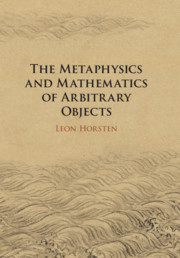Book contents
- Frontmatter
- Dedication
- Contents
- Figures
- Preface
- Acknowledgements
- Symbols and Abbreviations
- 1 Introduction
- 2 Metaphysics of Mathematics
- 3 Arbitrary Objects
- 4 Mathematical Objects as Arbitrary Objects
- 5 Structure in Mathematics
- 6 Mathematical Structures
- 7 Kit Fine
- 8 Generic Systems and Mathematical Structuralism
- 9 Reasoning about Generic ω-Sequences
- 10 Probability and Random Variables
- 11 Directions for Future Research
- Bibliography
- Index
- References
Bibliography
Published online by Cambridge University Press: 24 May 2019
- Frontmatter
- Dedication
- Contents
- Figures
- Preface
- Acknowledgements
- Symbols and Abbreviations
- 1 Introduction
- 2 Metaphysics of Mathematics
- 3 Arbitrary Objects
- 4 Mathematical Objects as Arbitrary Objects
- 5 Structure in Mathematics
- 6 Mathematical Structures
- 7 Kit Fine
- 8 Generic Systems and Mathematical Structuralism
- 9 Reasoning about Generic ω-Sequences
- 10 Probability and Random Variables
- 11 Directions for Future Research
- Bibliography
- Index
- References
- Type
- Chapter
- Information
- The Metaphysics and Mathematics of Arbitrary Objects , pp. 215 - 223Publisher: Cambridge University PressPrint publication year: 2019

